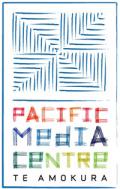
An Australian inquiry into media bias would ignore the bigger crisis facing newspapers in the digital age. By David McKnight and Penny O’Donnell
OPINION: Does Australia need an inquiry into the news media? It does, but not for the reasons that prompted Prime Minister Julia Gillard and Senator Bob Brown to discuss the idea. They are angered because of political bias. But there is an even bigger and more complex issue.
According to prevailing opinion, the newspapers of Australia are dinosaurs and like the dinosaurs, they will become extinct. The vast newsrooms with busy journalists hunched over their phones, the late night decisions on the front-page headline and the smell of printers ink as the fresh papers come off the press -- all this will disappear.
And, according to some, good riddance.
We beg to differ. Newspapers are in trouble but this is more than a problem for the two big companies which own Australia’s newspapers: it’s a problem for democracy and for an informed public.
Newspapers are in trouble because advertisements are going online. In the jargon, the "business model" which has sustained mass circulation newspapers for more than a hundred years is in swift decline. The techno-optimists assure us that we will still get our news, we’ll just get it by radio, TV and online, rather than paper and ink.
The rise of the internet has certainly allowed an unprecedented flowering and exchange of ideas and opinion. It’s also the vehicle for new kinds of entertainment (watch out television!)
But it has not produced a substitute for the news which is produced by newspapers. In fact, the bulk of news (as opposed to opinion) on the internet is ultimately generated by newspapers, supported by their the clunky print advertising business model.
'Free' news
The second most common source of internet news is generated from public broadcasters like the BBC and our ABC. "Free" news on the net is mostly paid for by print advertising or by the taxpayer.
Newspapers matter for other reasons. They and their journalists set the political agenda for the electronic media and the internet.
Murdoch’s Sydney tabloid, the Daily Telegraph, and The Australian are the most influential news media in Australia, according to independent research.
Newspapers achieve their agenda-setting role because they have the biggest newsrooms and they daily originate and publish far more stories than any other news medium. These stories and their angles, provide the raw material not only for the internet but also for radio shock jocks, TV talks shows, other newspapers and the Twitterati.
Not all newspaper-based news is high quality. Some is routine and some is little more than the reproduction of press releases.
But the key point is that consumers have been offered a modicum of high quality news for many years which was paid for by advertising, not the cover price of the newspaper. And that will not continue indefinitely.
Quality journalism is expensive. For example, the estimated costs for the foreign coverage of The New York Times is $70 million a year. The cost of The New York Times coverage of Iraq and Afghanistan is between $3-4 million.
Cutting staff
To pay for these sorts of costs newspaper publishers are anxiously seeking to create new forms of revenue to replace print-based advertising. They are also cutting staff and other costs. The losers in this are not just the readers of newspapers but a wider public who are informed by the media ecology in which newspapers generate a great deal of valuable news.
The future of quality journalism in the light of the crisis of newspapers is the subject of a project we are exploring with the financial support of the Australian Research Council and the Walkley Foundation for Journalism.
In the last 12 months we have surveyed 100 senior journalists and editors from all Australian states, covering both broadsheet and tabloid newspapers and both major newspaper publishers, Fairfax and News Ltd.
We have not yet processed all the results of this project but given the debate on whether there should be an inquiry into the Australian media, we feel our partial results would make a useful contribution.
We found that most journalists and editors frequently expressed their motives in idealistic terms, framing their notion of quality in journalism by referring to the public interest. By which they meant a sense duty to inform the public of significant events rather than, for example, commercial criteria relating to audience size.
Journalists and editors are alarmed at the breakdown of the business model which has sustained newspaper journalism.
When asked how important it was to develop a new business model, 87 percent said it was with "very important" or "important". Of those journalists and editors who offered an opinion about whether such a new business model would emerge half were confident of success while half were not confident of success.
'Life-and-death'
Among the comments made were: "It’s a life and death issue, really"; "The challenge for us is to produce journalism that people will pay for"; "We made a big mistake by posting things for free"; "We have to keep print revenue as strong as possible while we get better at this new technology"; "No-one I know under 30 reads a newspaper. They read online".
When asked what kind of support was needed from news organisations to guarantee the quality of journalism in the future, over half (54 percent) wanted more investment, resources and time to work longer on stories. This response was frequently explained in terms of previous redundancies and cost cutting. Sixteen per cent answered that what was needed was vision, leadership and "standing up for quality". Ten percent argued that news organisation should simply aim to produce good content and investigative journalism.
Many now believe that the attempt to put journalism on websites was mistaken and that the future lies in a subscription model, using tablets to deliver news. Whether this would provide the economic basis to pay a significant work force of journalists is by no means clear. But it would mean that printing and distribution costs would be eliminated which some estimate as 60 percent of publishing costs.
The move to tablets underlines the issue whcih we believe should be of major concern. It is not a question of supporting a particular physical product (newsprint and ink) but of ensuing that the society is serviced by a professional journalistic workforce which (hopefully) has the highest possible standards and which has the capacity to produce quality and indepth journalism.
In the near future the only kinds of quality journalism which may be financially viable may be the specialised financial journalism (to service wealthy investors) or a partisan journalism which is subsidised by a wealthy media owner with intersts in other more profitable businesses.
All of this is a long way from the political bias which has angered the federal government and the Greens. But if political bias becomes the central concern of an inquiry into the news media, it will achieve little.
Everyone will understand that this is code for attacking News Ltd who may simply boycott the inquiry. It is difficult (and probably undesirable) to legislate to correct political bias.
More useful would be to explore how governments can indirectly support a diversity of news and opinion, new forms of journalism and ensuring the existing situation where we have at least two (rather than one) major newspaper corporation, does not deteriorate.
(cc) Creative Commons
Dr David McKnight is an associate professor at the Journalism and Media Research Centre at the University of New South Wales, and Dr Penny O'Donnell is a senior lecturer in the Department of Media and Communications at the University of Sydney. This is the full version of the article published in The Sydney Morning Herald Online. It is republished on PMC Online with the permission of the authors.



